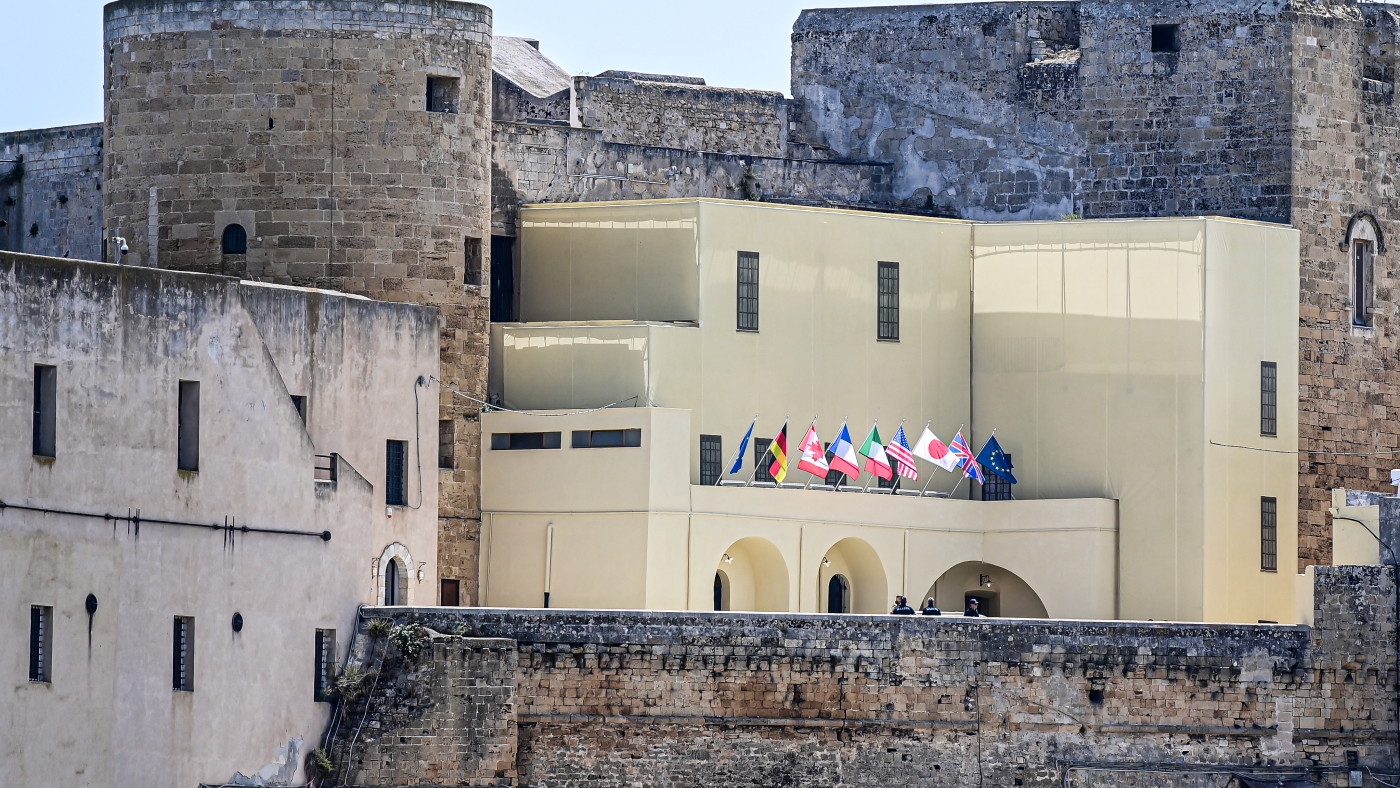
[ad_1]

Castello Svevo in Brindisi, Italy, where G7 leaders will meet for a dinner during their summit this week.
Piero Cruciatti/AFP/Getty Images
hide caption
toggle caption
Piero Cruciatti/AFP/Getty Images
Western leaders have agreed to the concept of using the interest from frozen Russian financial assets to help support Ukraine fight Russia and rebuild after the lengthy war.

But they’re still working out the details of exactly how and when to distribute the roughly $3 billion in annual interest. Those negotiations are at the top of the agenda for the G7 leaders’ summit in Puglia, Italy.
What are the frozen Russian assets and how much are they worth?
When Russia invaded Ukraine in 2022, Western governments froze about $300 billion in Russian assets — including money, securities, gold and bonds — held mainly in banks in Europe.
Leaders of the G7 economies have agreed to use the interest generated by the assets — about $3 billion per year — to help Ukraine buy weapons for its fight against Russia and rebuild after the war.
What are the sticking points?
The United States and European countries have different proposals for distributing the money.
Scheherazade Rehman, a professor of international finance at George Washington University, explained it in simple terms.
“The Europeans would like to transfer them to Ukraine yearly or every two years, so spread it out. The Americans, however, want to find a way to get this money very quickly to Ukraine all at once,” Rehman said.

The European proposal would see about $3 billion a year go to Ukraine, and only interest from a certain part of the frozen Russian assets — $190 billion held by a company called Euroclear in Belgium — would be shared.
The U.S., on the other hand, wants to give $60 billion to Ukraine up front, because Ukraine’s need on the battlefield is dire. Officials have said the interest generated from the frozen Russian assets would go toward paying back that money.
Rehman said Washington has the weaker hand in the debate because only about $5 billion of the $300 billion in Russian assets are held in the United States — and European nations are concerned about how they would be paid back for a big initial lump sum.

A boy jumps next to a destroyed Russian self-propelled gun on Mykhailivska Square in the center of Kyiv on June 11.
Anatolii Stepanov/AFP via Getty Images/AFP
hide caption
toggle caption
Anatolii Stepanov/AFP via Getty Images/AFP
Will the G7 reach an agreement by the end of the summit?
It’s hard to say what this agreement will look like in its final form — but officials familiar with the planning have told reporters that President Biden is going to make a final push to secure a deal.
The agreement will likely be some sort of compromise between the European and U.S. proposals. But Rehman said recent elections in countries like France and Germany may also affect discussions.
“Europeans really have to get their act together at this G7 meeting because they’re on shaky ground just because of the European parliamentary elections that just took place where the hard right has now got a historic toehold,” she said.
“The Europeans are coming into this with very different footing than if this was 10 days ago.”
[ad_2]